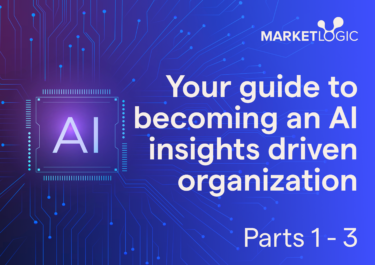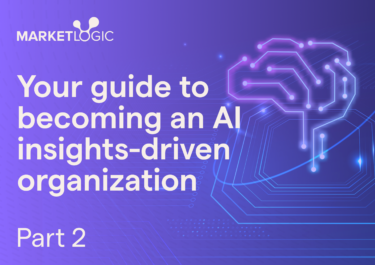
May 17, 2018
Read time: 4min

May 17, 2018
Read time: 4min
In our ‘Disruptors’ webinar series, we look at industries undergoing major changes, inviting experts to explain key trends and what insights and intelligence professionals can do to tackle them. Here we concentrate on the Grocery industry.
The webinar ‘Tackle grocery disruption with faster speed to insight’ brought together expert panelists Alison Chaltas, Global President P2P at Ipsos; Toby Pickard, Senior Innovations and Trends Analyst at IGD and Martin Rückert, Chief AI Officer at Market Logic.
The speakers identified six major trends shaking up the global Grocery industry.
Today’s shoppers buy more frequently and across multiple channels. However, too many people in the retail industry still talk about physical vs digital, whilst today’s Grocery industry experiences are all about blending and omnichannel: physical stores, online stores, the invoicing system, the next big thing from Amazon… these touchpoints are all part of the same journey.
Alibaba, Amazon and Walmart are leading the way, disrupting themselves in order to disrupt the industry.
Alison shared examples from Alibaba such as their HEMA store format – a high-tech fulfillment center that also provides a community space where families meet, shop and eat chef-prepared meals from the fresh produce they select. Other Alibaba examples included vending machines for cars, and digital transformation partnerships with over 2,000 traditional, family-run stores. She also pointed to Walmart’s decision to establish an independent innovation hub in the Valley, to test and trial innovations beyond the mindset of a traditional merchandiser.
Grocery is strongly linked to sectors like clothing and technology. Tech, in particular, is the foreground of everything new that is happening in retail at the moment. In addition, the North American and European grocery markets look at Asia for the most disruptive trends.
Alison used top-line stats from a recent Ipsos survey to highlight these points. For example, in the US online penetration in the food market is 15%, 10% for household products and 28% in beauty & personal care. On the other hand, online penetration in China is respectively 51% in food, 44% for household products and 51% in beauty & personal care.
Toby shared many insights into why customers are becoming more self-aware and passionate about their buying decisions. Trends like gluten-free and lactose-free are popular worldwide, and in-store nutritionists (see Waitrose in the UK) are becoming the norm.
Shoppers are showing great interest in private labels offering premium, highly focused, tailored products that match their demographics. Millennials, in particular, are following this premiumization of private labels. Tesco has launched ‘Eco-Active,’ an eco cleaning premium range; Jet.com have launched Uniqley J, with sixty products spamming from coffee and olive oil to laundry detergent, baby, beauty, and pet products.
On the other hand, regional products are bigger than ever. AmazonFresh in the UK is a testament to this hyperlocal trend, offering high-quality products from local delis, like Borough Market in Central London. Similar trends are growing in the US, France, and the Netherlands.
Toby then outlined how shoppers expectations are continuously evolving and pushing the industry to work harder. If twelve months ago it was acceptable for a next-day delivery, today we’re talking same-day delivery, or 1-hour delivery (15 minutes in the Netherlands).
But there are brands that are taking deliveries beyond the ‘speed level’. Walmart, Amazon, Jet.com, Edeka (Germany), ICA (Sweden), are delivering groceries to unattended homes and putting items into the refrigerator, which is a major, exciting trend we should all follow carefully. And we’re not just talking delivery of goods, but stocking shelves and refrigerators too.
The richness of data emerging from these advances is unprecedented. Shopper research used to start at the point where your brand was written on a shopping list. In the new retail landscape, rich sources of data emerge well before that point.
For insights experts, we can say that what was true yesterday might not be valid today anymore. Another challenge is to get closer to the business: stop being a technologist or methodology expert, and become a business driver. To do so, relying on top-notch marketing insights is key.
Martin Rückert, Chief AI Officer at Market Logic, closed the webinar by demonstrating how Market Logic’s Insights Platform can help insights managers and marketers do exactly that: make fast, winning decisions that accelerate growth.

How is AI transforming roles, skills and capabilities in insights functions?

Interview with Nextatlas CEO Luca Morena

An introduction to gen AI for businesses. From RAG to LLMs — get the lowdown.

Exploring the Future of AI in Marketing: Integrating Insights into Business Systems for Enhanced Decision-Making.

To succeed in today's dynamic consumer landscape, your organization must be able to react faster…

How does this guide help you? In part 3 of our guide, we’ll delve into…

Learn the AI insights-powered enterprise systems architecture and processes.

Transform your organization with insights. Download this guide to find out how.